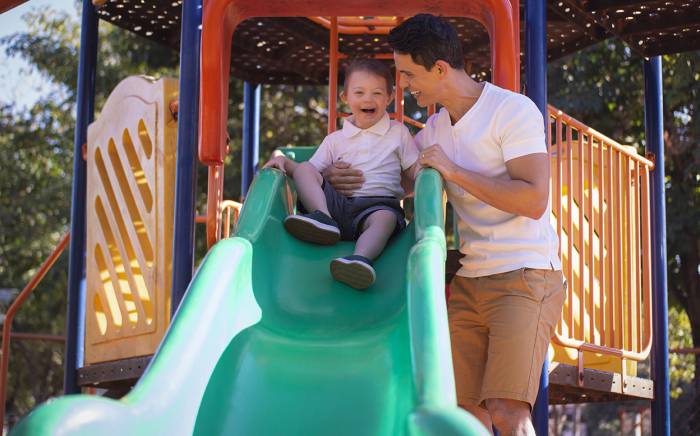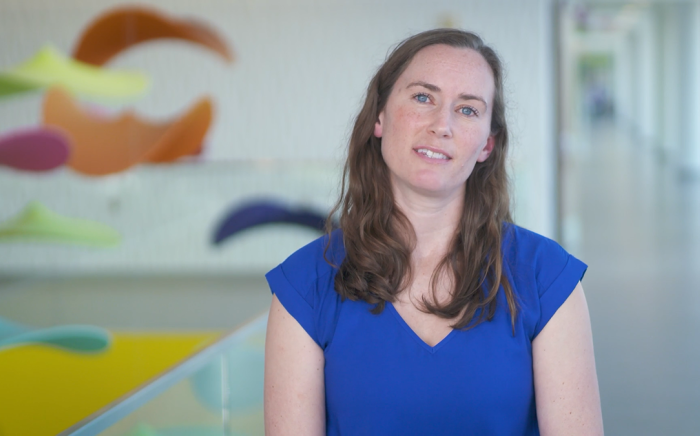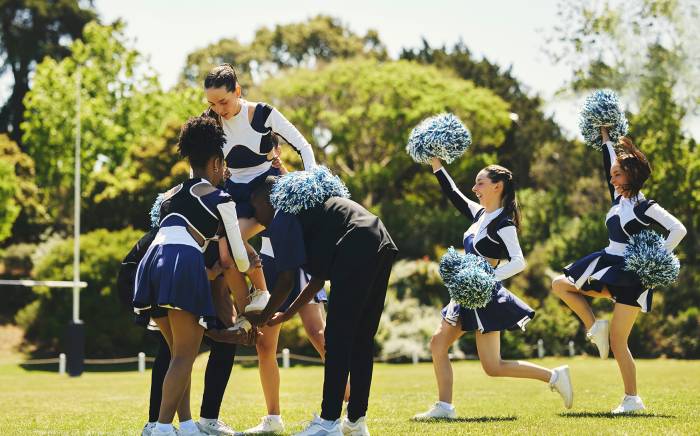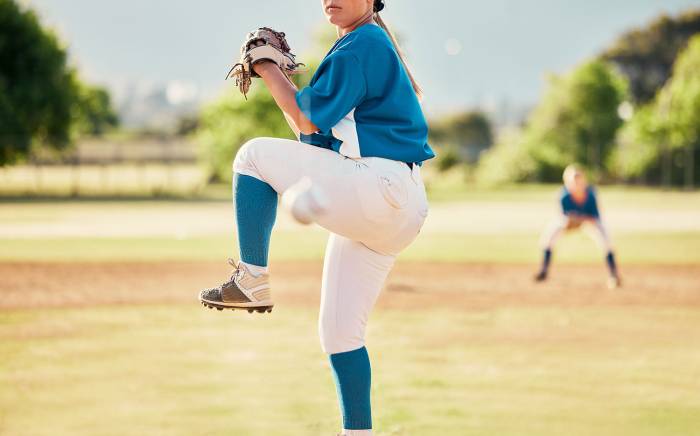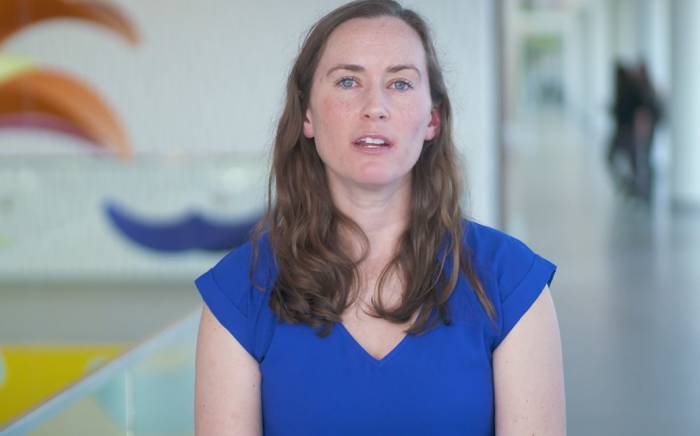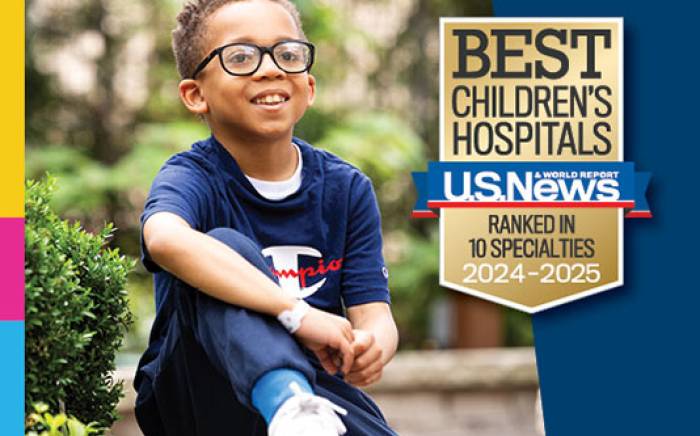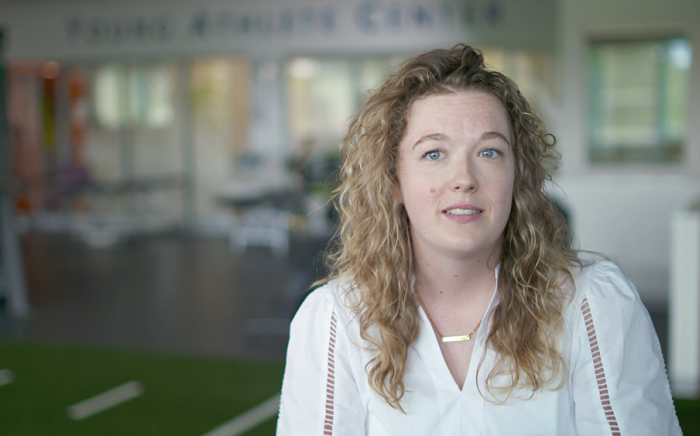 Growing up in Wisconsin, Mark Halstead, MD, a Washington University pediatric sports medicine physician at St. Louis Children’s Hospital, played a variety of sports, including soccer and tennis, but his primary focus was running cross country and track. Like many young athletes he now treats, he experienced an overuse stress fracture his freshman year of high school. That was his first sports medicine experience.
Growing up in Wisconsin, Mark Halstead, MD, a Washington University pediatric sports medicine physician at St. Louis Children’s Hospital, played a variety of sports, including soccer and tennis, but his primary focus was running cross country and track. Like many young athletes he now treats, he experienced an overuse stress fracture his freshman year of high school. That was his first sports medicine experience.
He gained even more personal experience in medicine when his mom died from breast cancer when he was just 16. “That’s when I knew I wanted to take care of patients,” Dr. Halstead says.
Dr. Halstead has been a runner for more than 30 years and believes his experience playing sports helps him better work with patients. “It’s important to be able to relate to athletes and to understand how the body is used in a sport.”
Since Dr. Halstead began working in sports medicine at St. Louis Children’s Hospital 15 years ago, the field has changed significantly. “When I started, there wasn’t a lot of good sports medicine research in kids—we just translated what we knew about adults and from observation,” he explains. “Now there has been an explosion in sports medicine research in kids because of the specialization in sports that has resulted in more injuries and burnout. In addition, concussions are now front and center in the world of sports.”
This research in concussions has led to changes in how physicians medically manage patients. Dr. Halstead has been on the frontline of this as the director of the St. Louis Children’s sports concussion program.
“When I came out of training, guidelines for pediatric concussions were lacking. I was a member of the executive committee for the Council on Sports Medicine and Fitness within the American Academy of Pediatrics (AAP). I saw a need to help develop some guidelines for diagnosing and managing concussion for pediatricians and that catapulted me into the concussion care world.”
In 2010, he was the lead author of the first AAP report on how to manage sports-related concussions. The next eight years were filled with research that resulted in new findings on concussion. And that meant new recommendations to physicians. So in 2018, Dr. Halstead was again the lead author in revising the AAP’s guidelines.
The report dramatically changed what was previously advised in concussion care. Research found that light activity is beneficial to recovery in kids.
“This is the opposite of previous recommendations that said to keep kids home in a dark room with no stimulus,” Dr. Halstead says. “We’ve learned that complete rest for most health-related issues is not good. It creates problems rather than helps kids get better. Exercise helps the brain with focus even without a concussion. The benefits of exercise in general translates to concussion care.”
Research continues in concussions. “The brain is a complicated organ and there is still so much to learn,” Dr. Halstead says. “Some of the research focuses on rehabilitation we can do for the brain, how to prevent concussions, how to integrate kids back into school after concussion, and how to diagnose concussions. There is still no gold standard to confirm a concussion.”
Part of Dr. Halstead’s role is to educate physicians and the general public about concussions.
“There are still some misconceptions that kids should not do anything while they are having symptoms. But we’ve learned that getting active sooner is better for kids.”
He urges physicians to review the new guidelines to best care for patients. “Because of the overwhelming amount of research coming out monthly about concussions, it’s more efficient for physicians to read the summary of new guidelines to stay current. The word is getting out but not every physician sees the guidelines. Through these guidelines, we hope to keep kids safe and do the right things for kids.”
Getting Young Athletes Back in the Game
Beyond concussions, Dr. Halstead sees a lot of overuse injuries in his practice.
“My biggest concern is that I’m seeing overuse injuries in increasingly younger patients,” he says. “Today, there is more competitive sports participation at a younger age. As a result, kids don’t develop the proper movement patterns and strength they need before playing these sports. The world of free play is almost non-existent so kids don’t go outside and climb, run and bike where they develop these other physical abilities. Everything is structured now and structured sports have consequences. It’s causing higher rates of obesity in some kids who don’t feel they belong because structured sports aren’t their thing and they may not have the outlet anymore to be active.”
In addition, he says many kids have their identities tied to sports. “It’s their social network. When we have to keep a kid out of the sport for four to six weeks, we then deal with the mental health part of it.”
To help these injured athletes, St. Louis Children’s Hospital created the Young Athlete Center where Dr. Halstead is the co-medical director. This center provides physicians, physical therapists and athletic trainers all who have additional training in the unique nature of the pediatric and adolescent aged athlete.
The Center provides sports-related concussion assessments, on-site imaging, injury evaluation and treatment, casting, splinting and pediatric specialty care of fractures, minimally invasive surgical treatment and other services focused on young athletes.
Housed at the St. Louis Children’s Hospital Specialty Care Center in west St. Louis county, the Young Athlete Center is “like Disneyland for young athlete rehabilitation,” Dr. Halstead says. The sports therapy area of the Young Athlete Center includes an artificial field turf, basketball court, baseball throwing lanes, and dance bars so young athletes can replicate the sports they play as they rehabilitate.
In addition, the sports therapy area includes wireless 3-D motion analysis technology to visualize how athletes are moving in order to identify at-risk patterns and provide education on how to prevent injury, as well as a 70-foot-long running track that allows athletes to gain enough speed for physicians and therapists to evaluate their movement patterns and guide recommendations for improvement.
“This center combines orthopedics, physical therapy and sports medicine in one place and allows us to conduct further research and have more collaboration with physical therapy. Before, we were all in different buildings but this center facilitates communications between caregivers and families and enhances care.”

